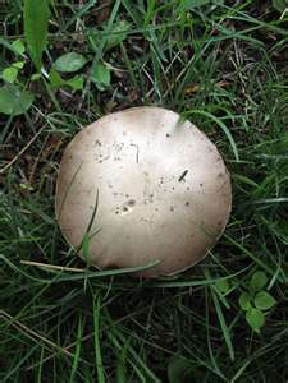Mushrooms & Puffballs
 At some time or another, most lawns are troubled with mushrooms or puffballs. Varying in shape, size and growth habits, mushrooms may be found growing in clumps or individually in a lawn. Puffballs resemble balls or pears growing in a lawn. Mushrooms and puffballs are both caused by fungi that thrive on organic matter in the soil.
At some time or another, most lawns are troubled with mushrooms or puffballs. Varying in shape, size and growth habits, mushrooms may be found growing in clumps or individually in a lawn. Puffballs resemble balls or pears growing in a lawn. Mushrooms and puffballs are both caused by fungi that thrive on organic matter in the soil.
Mushrooms often grow from buried organic matter in the soil such as logs, roots, tree stumps, or construction lumber. A typical mushroom has an umbrella shape. The stem (stipe) grows out of the soil, with the cap on top of it. Mushrooms may be found in fairy rings during certain times of the year.
Puffballs are white when young, but later take on a dark appearance, turning brown to black in color. If they are crushed when mature, they will release a “puff” of spores — hence the name.
Up to fifty different species of mushrooms are known to grow in lawns. These mushrooms should never be eaten unless an expert has been consulted to verify their identity. In most cases, the fungus will produce a heavy, felt-like mat of dirty-white mold growth (mycelium) which may penetrate the turf and soil to a depth of eight inches or more. With fairy rings, the fungus filaments become so dense that the soil cannot be wetted and the grass dies from lack of moisture. A toxic substance may also be released, preventing growth of the grass.
Control:
1. Individual mushrooms or puffballs may be removed temporarily by mowing or breaking them off. Both mushrooms and puffballs will usually reappear until their food source is used up. If possible, it is best to remove the organic food source from the soil.
2. If mushrooms appear over and over in the same area and the grass begins to die, it may be fairy ring. In this case, large quantities of water should be pumped 12-24 inches deep into the soil just inside the ring of dead grass. A tree-feeding lance or root feeder hose attachment is recommended for this purpose, or a pitchfork can be used to make numerous holes in the dead area.
3. For seriously infested lawns, core aeration is highly recommended to break up the thatch and disrupt the mat of mycelium. This also allows better movement of water into the mycelium’s dry mats.
4. There are no chemical fungicides available that can guarantee control of these mushroom and puffball fungi.
The Green Pointe staff is always ready to assist you with your lawn. Please call if we may provide any information to enhance your lawn’s health or appearance.
Please call our office if you have any questions or visit our “Questions” page to review other frequently asked questions and answers. (801) 261-1171
 Green Pointe Lawn Care
Green Pointe Lawn Care